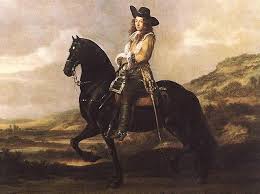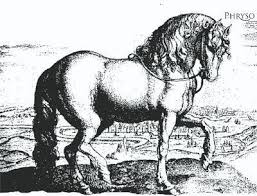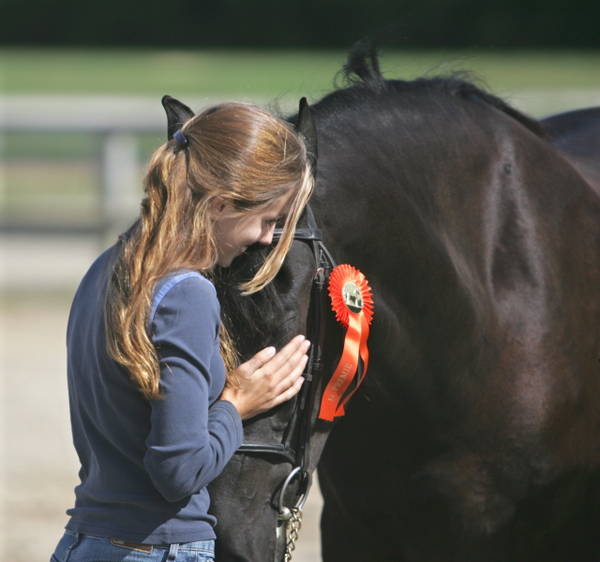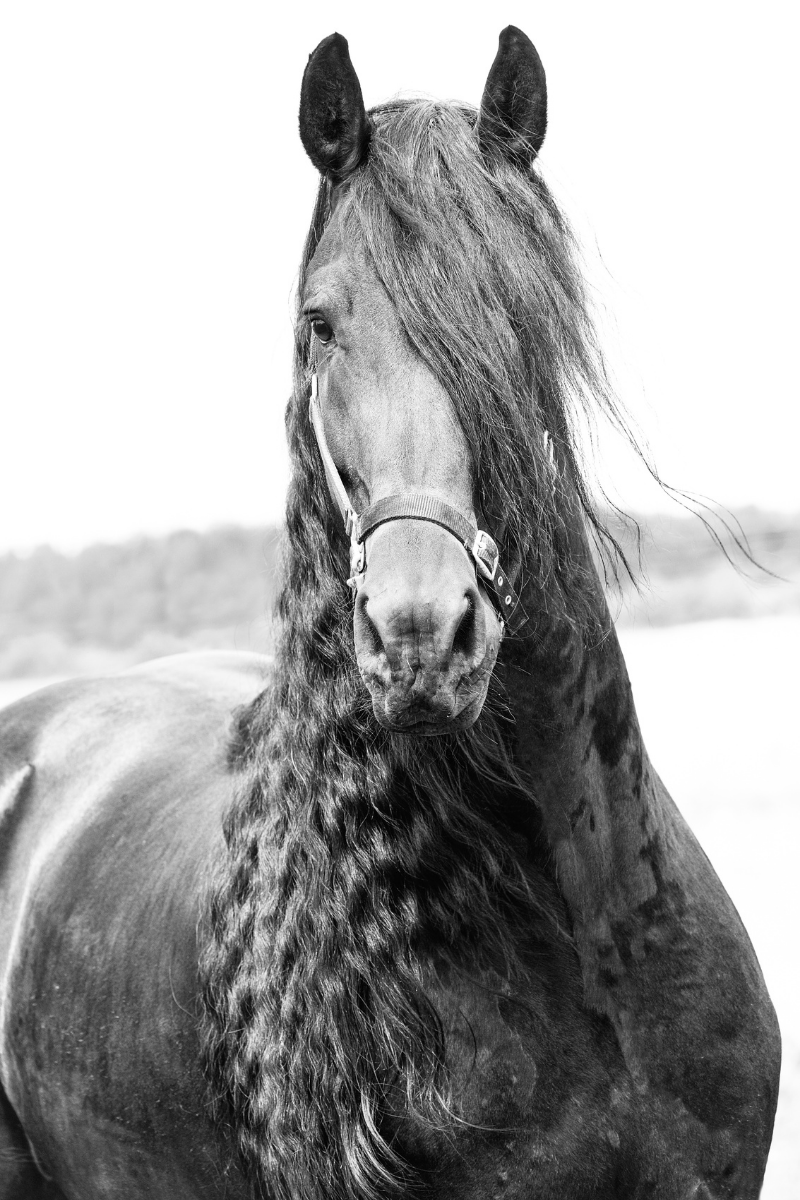
The Friesian horse is an ancient breed originally from the province of Friesland in the northern Netherlands. We can track the first record of the Friesian Horse to 1544 when the German Elector Johann Friedrich von Sachsen came to Reichstag in Spiers riding a Friesian stallion. Based on historical records, we know Friesians were used primarily in battle as a war horse.
The etching, dating from 1568, of the stallion Phryso belonging to Don Juan of Austria in Napels is very well known.

Phyrso Friesian Stallion
Andalusian and Arabian bloodlines were introduced in an effort to lighten the heavy breed when Friesians were no longer needed in battle. Lightning the breed made the Friesian more suitable for drawing carriages and in riding schools for dressage in France and Spain. During the 18th and 19th centuries, Friesians quickly gained popularity as the demand for carriage and agricultural horses increased.
19th Century
In the 1800’s, cross-breeding the Friesian with lighter breeds became very popular. The Friesian has had a major influence in developing the current Orlov Trotter, Norfolk Trotter, and the Morgan. This amount of cross-breeding quickly became controversial for Friesian enthusiasts. The Friesch Paarden Stamboek (FPS) was founded in 1879 in an effort to preserve the Friesian breed.
The Friesian has been a major influence on breeds such as the Orlov Trotter, Norfolk Trotter, and the Morgan due to its animated trot. Friesians became a rarer sighting in Friesland over the 18th and 19th centuries. The presence of the Friesian horse became an indicator of the owner’s wealth, used primarily to drive to church or for short-track trotting races.
On 1 May 1879, in a tavern called ‘De Drie Romers’ in Roordahuizum, Het Friesch Paarden Stamboek (Friesian horse studbook) was established. Registration of the Friesian horses that still remained proved somewhat of a stimulus to the breed, but the popularity of the heavier breeds, the so-called ‘Bovenlanders’, nonetheless continued to undermine the Friesian, and by the start of the 20th century, the breed was again dwindling rapidly. In 1913, there were only three older studbook stallions available for breeding.
Fortunately for the Friesians, there was a group of people who purchased and raised the still-existing pure-bred colts. This strategy succeeded and saved the Friesian horse from extinction.
Again in 1913 Farmers needed a heavier workhorse for their farming and therefore began to replace the Friesian with shorter, heavier-built horses better suited to agricultural work. Friesian breeders began to re-develop the breed to a shorter, heavier horse that could meet the current agricultural needs.
The age of machinery led to Friesian numbers dropping yet again to dangerous levels. By 1965 the number of Friesian mares registered with the FPS had declined to around 500. Friesian enthusiasts pulled together to sustain the breed and the Friesian was saved from extinction, again.
In 1967, the national riding association ‘De Oorsprong’ began a crusade through the Dutch province of Friesland to promote the Friesian horse. Many people discovered the amazing characteristics of the Friesian breed and put the Friesian horse to use for many and varied purposes.
Modern Friesian
Today the modern Friesian is valued as an incredible sport and recreational horse for both horseback riding and carriage driving. The Friesian breed is now one of the most sought-after and notable breeds in the horse world.
The Friesian horse is known for its friendliness, magnificent presence, natural beauty, calm demeanor, intelligence, adaptability, and incredible work ethic. The breed is fortunate to have drawn passionate people, throughout history, that are willing to do anything to preserve the breed we know today.
If you are looking for more information about the Friesian horse in the United States, visit the Friesian Horse Association of North America (FHANA) website.

I’ve been around horses my entire life, but my Friesian journey started just over 20 years ago. Our horses have always been a part of our family. They have traveled with us as we relocated from Vermont to New York to Iowa and finally, to Arizona. I can’t wait to share our story with you!
Related
Mar 2, 2021
The Fascinating History of the Amazing Friesian Horse Breed

Leave a Reply Cancel reply
@starlitridgefriesiansandfells
LET'S BE FRIENDS ON INSTAGRAM
[…] love Friesian horses as much as we do? Want to learn more about this amazing breed? Check out our History of a Friesian Horse […]
[…] We have records of the Friesian horse dating back to the early 1200’s. There are several records of Friesian horses all over Europe, owned by royalty and ridden into battles. For more history on the Friesian horse, check out our Friesian Horse History. […]
[…] Friesian horses originated in Friesland – a province of The Netherlands (Holland). The Friesian horse, one of Europe’s oldest breeds, was originally imported to North America in the seventeenth century but the breed was totally lost in North America due to crossbreeding. The Friesian was not reintroduced to North American until 1974. Want to learn more about the History of the Friesian horse? Check out our Friesian Horse History blog. […]
[…] Want to learn more about the History of the Friesian Horse? Check out this article. […]
view
view view